This past weekend the Maker Faire returned to the motor city. While it seemed a bit smaller than previous years, the event still brought in a ton of awesome makers from the metro Detroit area and beyond.
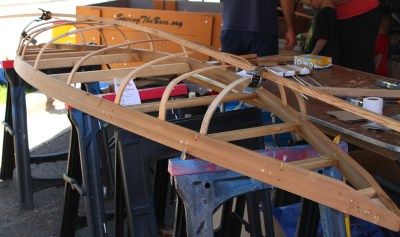
Although we don’t feature too many woodworking projects, there were quite a few woodworkers at the Faire with projects ranging from custom longboards pressed with a home built iron mold to DIY kayaks with elaborate wooden skeletons built by a local group of Michigan kayak builders. The kayaks were quite impressive: hand sewn nylon panels are wrapped around custom frames made from steamed white oak. It’s great to speak with the makers about the specialized skills needed for kayak building.
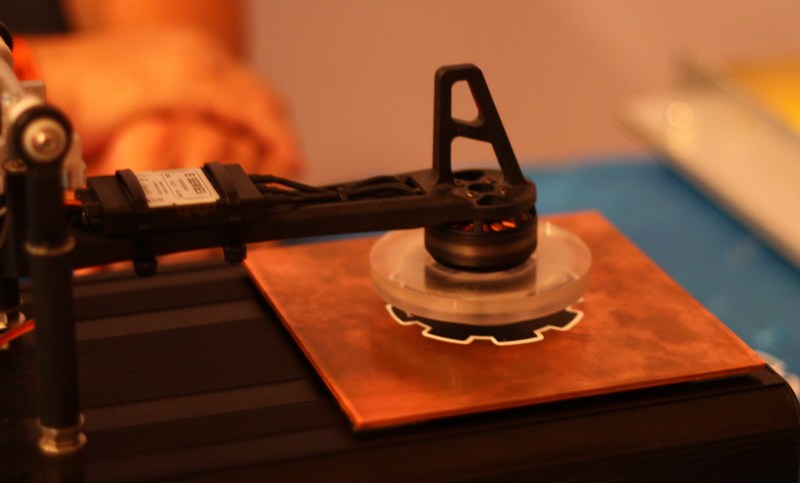
A maker from Carleton, MI brought a pretty interesting setup demoing magnetic levitation produced by eddy currents. His simple demo consisted of a swing-arm with a spinning acrylic disk mounted on a brushless motor. Several magnets were attached to the ring in an alternating north/south pattern. When the motor spun up over a copper or aluminum plate, the arm started to hover about a centimeter above the surface. This design is similar to the tech used by the various hoverboard concepts that have been floating around.
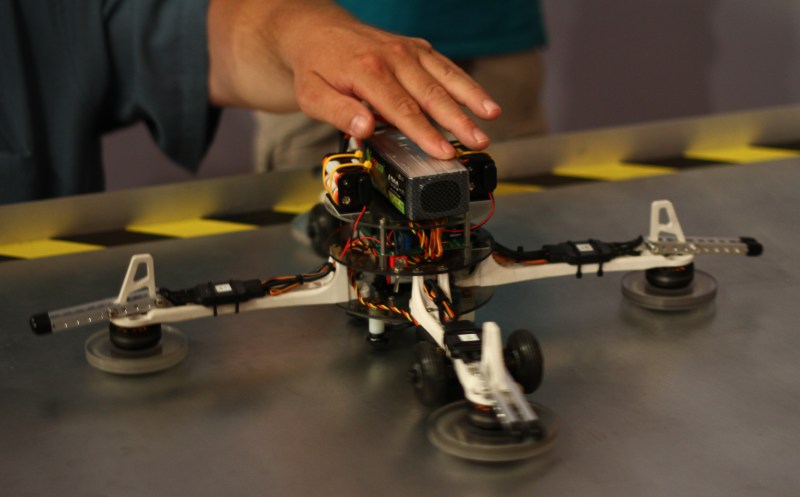
To take the design even further, he mounted his homemade “hover engines” on a quadcopter frame. The quadcopter was able to hover over a small aluminum sheet, and although he couldn’t drive the quad around, he was confident that throttling the motors would give some control over steering and thrust. Interestingly enough, the landing gear mounted on the quad is essential: the motors aren’t able to spin up when the disks are very close to the surface. To get around this, the quad stays up on its wheels while the motors spin up, and then it lowers down and begins to hover.
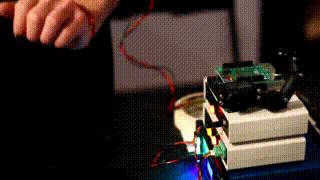
There was also an interesting demo of sensing muscle activity with EMG (electromyography). There are a few EMG kits and dev boards out there that amplify your body’s signals to usable levels, but you can easily get the job done with a couple electrodes and some op-amps like this maker did. If you’re interested in getting started with EMG, check out some posts that we’ve featured before.

While software projects aren’t nearly as eye-catching as hardware and mechanical projects seen around the Faire, the guys from MakerOS made a good showing. They are a small software company out of Detroit that is working on web-based backend for Maker-style businesses (which we’ve written about before). Their software runs a couple 3d printing companies in the Detroit area, and they just opened up a beta if you want to check it out for yourself.
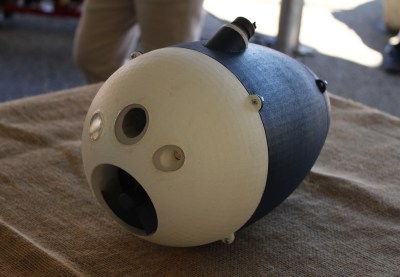
Another group was showcasing a submersible prototype. The entire (fairly large) chassis is 3d printed and uses a singe thruster mounted in the front of the vehicle. The thruster pushes water rearwards, which is routed through 4 different butterfly valves that the team designed. The valves essentially vector the thrust, and allow the submersible to be steered without multiple thrusters or any other control surfaces. The team’s website is incredibly vague, but they said they would be releasing more information soon.















Ummm….buttery valves….yum. Perhaps they would be better replaced with butterfly valves
The submersible is very cool, but I wonder if its a case of a solution in search of a problem…
Steaming wood to bend it should be a skill that more people should learn. It can make creating a framework for projects much easier to accomplish.
Heh, butterfly valves indeed. Fixed, thanks!
When I worked on an AUV, one of our main problems was getting vectored thrust cost effectively. At $500 each for AUV thrusters, 6 thrusters can be a real stretch. I really like the butterfly valve idea, keen to see what performance they get.
“This design is similar to the tech used by the various hoverboard concepts that have been floating around.”
I see what you did there.
“Although we don’t feature too many woodworking projects…….. It’s great to speak with the makers about the specialized skills needed for kayak building.”
While I suppose craftsmanship is in some ways the polar opposite of a hack, I would really love it if HaD became an aggregate for stuff like this as well. Personally, I’m really interested in aviation and space flight, and have come across some awesome build pages related to the subject, complete with home shop metal and composite working with giant home-made CNC routers and various tools. I bet a lot of these kinds of things are unfamiliar to the readership here, so it might be welcome to bring these kinds of things to light. I’m not speaking just strictly about aerospace, but a large assortment of cool things individuals and small teams are building. I understand that HaD might not have the manpower to cover so much, but maybe even a brief description and a link to the build site would be sufficient. Just enough to bring awareness of this kind of work. I’ve unintentionally come across a lot of cool stuff online that I never thought to look for, and in that way, it seems to be in-line with part of the purpose of HaD.
I like that multicopter hoverboard – it seems to me that the biggest difficulty in making them is getting the giant sheets of metal! (And getting those damn fiddly magnets into position.)
Also, it’s not noted in the article, but I suspect he used a halbach array- it’s basically a one-sided magnet.
No. They are N52 class Neodymium magnets arranged in a circular pattern. The magnets are positioned in an alternating pattern as north, south, north, south, etc. The magnets were purchased from K&J Magnetics. They are 5/8″ diameter and are 1/4″ thick. They are pressed into the polycarbonate disks for safety. Hendo uses Halbach arrays but those are five magnets arranged in a specific pattern.